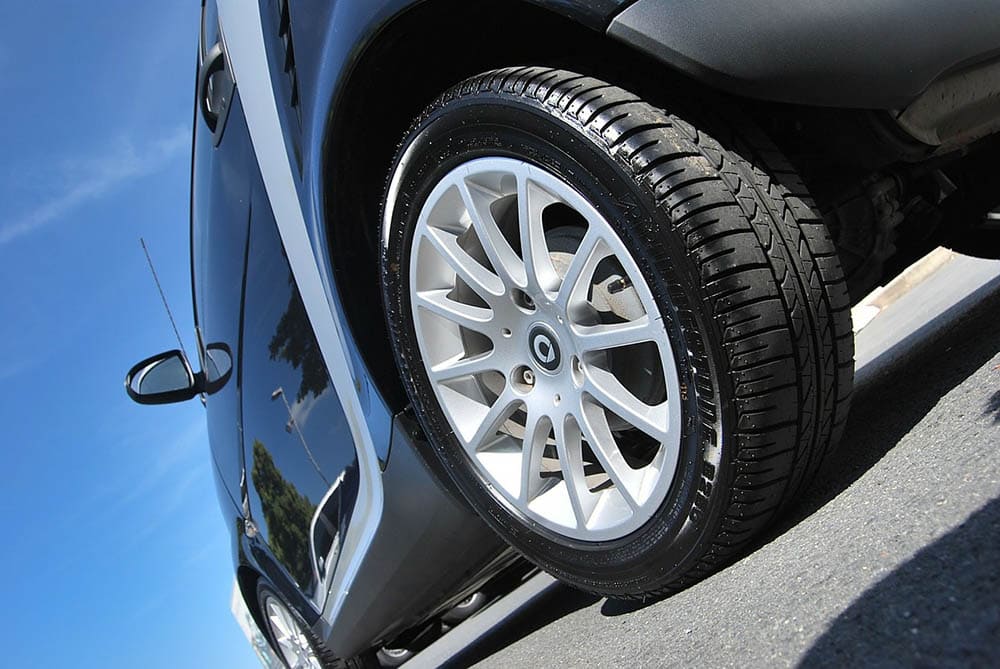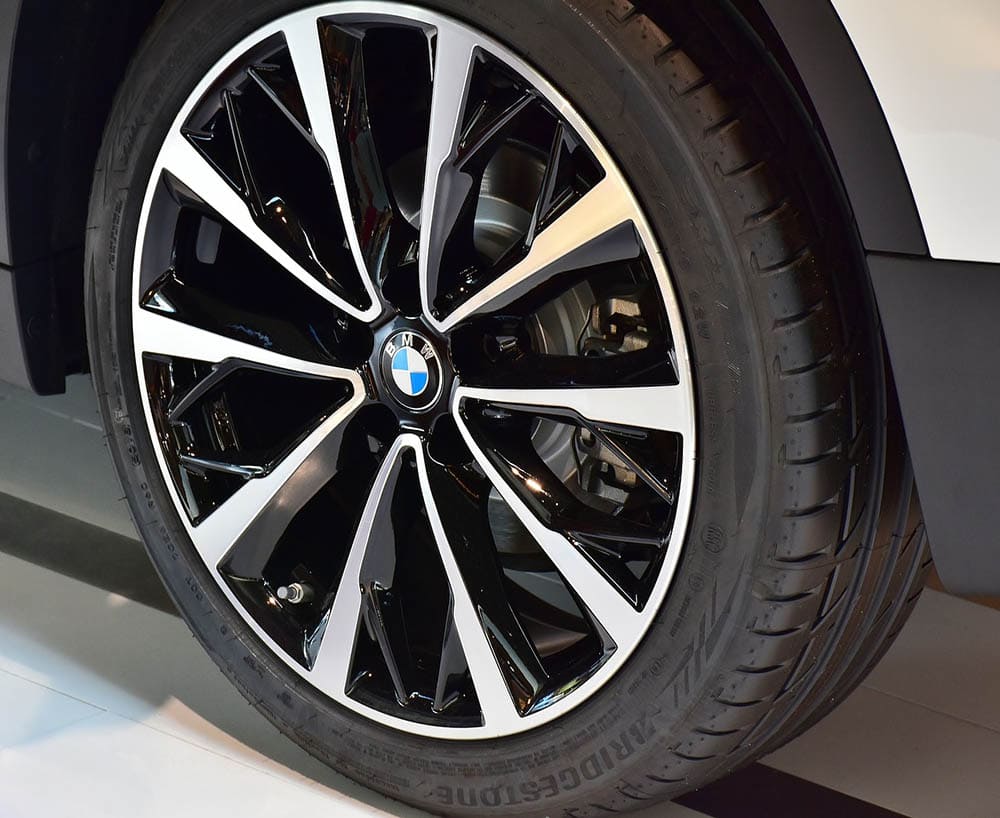How Many Tires Does Insurance Cover?
-
Pete Ortiz
- Last updated:

Most of us don’t think about the number of tires a car insurance covers until we experience a blowout while driving. But, it’s not only blowouts that you might be concerned with, but also the treads on your tires. A flat tire can be a major inconvenience, especially if you’re in a hurry or on a crucial trip. You may be wasting time and money on a replacement. In this case, the question of how many tires will your insurance cover might be at the forefront of your mind.
The number of tires your insurance covers comes down to various factors. Below, we’ve broken down the coverage basics if you have an accident that results in tire damage. Keep reading to learn more.
Number of Tires Covered by Tire Insurance
In the United States, only three tires are covered by car insurance for a few reasons.
- First, tires are inexpensive. So, most people can afford to replace them without help.
- Second, many insurance companies also cover tire wear and tear, along with windshield wipers, oil changes, and more. They don’t consider them part of the vehicle or its value.
- Finally, liability insurance covers accidents that might damage another person’s car. But there’s no coverage in the law that requires the owner to carry insurance on their car tires.
The three tire rule is not industry-standard but a common practice. Some companies offer four tire policies and deductibles for tire replacement. Before committing to a policy, check with your agent whether your tires are covered. Also, ask what the replacement cost will be if they are damaged.

The Impact of Different Types of Tires on Your Auto Insurance
The type of tires on your vehicle can impact the insurance cost differently. One is the cost of replacement, which has been going up. It’s because the tires are durable. That means they last longer and have less tread. It makes them harder to replace when they get damaged.
Some tires (like all-seasons) are also more likely to end up on vehicles with higher replacement costs. Depending on the type of tire you drive, your car insurance company may charge you less. That’s because certain tires are safer and can save the insurance company money in case of an accident.
Also, the tire size matters. The smaller the tire, the less dangerous it’ll be in case of an accident. Larger tires protrude more from the vehicle, making them more likely to get hit in an accident. They also reduce maneuverability and braking distance, increasing your risk for accidents.
All tires come with a speed rating. The speed rating refers to the maximum speed the tire can safely travel when inflated well and mounted on its recommended rim. If you go above that rating on the highway, your insurance company may charge you more for coverage.
Tires with higher speed ratings are more expensive and carry higher insurance premiums than those with lower ratings. Check your vehicle owner’s manual or contact your auto dealer. This way, you’ll learn what your vehicle’s recommended tire pressure is.
Benefits of Tire Insurance
Tire insurance covers tires and rims. You will buy it as a separate policy. The primary purpose of this policy is to protect against any accidental damage. It may be due to road accidents, vandalism, or natural calamities, such as hurricanes and floods.
Tire insurance protects against these types of events by covering damage and loss associated with them. Also, it includes extra coverage for things like damage caused by potholes and road hazards.
Repairing one damaged tire can cost hundreds of dollars. Buying four new tires over a year can be upwards of $1,200. Tire insurance covers these costs.
Unsafe tires can drastically affect your safety on the road. With proper maintenance, regular tire inspections, and tire replacement, you can reduce your risk of an accident due to tire issues.

Types of Tire Insurance Coverage
There are several types of tire insurance coverage available. You can choose the best one for your needs.
One of them is comprehensive insurance. It’s the most expensive of all tire insurance policies. It covers all damages to your car, except those caused by collisions and theft. Your insurer pays for repairs to your vehicle or replaces it with a new one if necessary. Comprehensive policies also include coverage for your tires in case of any damage.
Also, there’s Road Hazard Coverage. The policy covers damage incurred during normal driving conditions on the road. It will cover the cost to repair or replace the tire if it’s damaged due to hazards on the road.
The third insurance cover is the Tire and Rim Coverage. It covers damage caused by potholes, nails, or other road hazards. It also covers rims. Rims can be damaged if there is a collision.
Additionally, there is the New Tire Replacement Coverage. It caters to both covered and non-covered causes of loss that make the consumer replace their tires. New tire replacement policies cover only new tires. If they were installed on the automobile purchased within 30 days before an incident, up to a maximum coverage limit.
Differences between Tire Insurance and Tire Warranty
Tire insurance and tire warranty are two types of coverage that your vehicle’s tires may be eligible for. Both can cater to the cost of replacing your vehicle’s tires if they are damaged or destroyed in an accident. While both offer some protection, there are some notable differences between them.
Each has its pros and cons. Tire insurance may be cheaper than a tire warranty, but it only covers certain damages to your tires. A tire warranty may cost more than tire insurance upfront but could save you money in the long run.
Tire insurance works just as other coverage types that come with your car insurance policy. There is a deductible amount that you will have to pay out-of-pocket if you claim the policy.
But most policies do not require any monthly payments. Perhaps you were involved in an accident where your tires were damaged beyond repair. Tire insurance will pay for the total cost of replacement tires up to the limit specified by your policy.
A tire warranty is also purchased as part of your car insurance plan. But rather than paying for a full set of replacement tires, it covers only one.
Frequently Asked Questions about Tire Insurance
Does insurance cover slashed tires?
Tire slashing is a common form of vandalism. It could be done simply for fun or to prevent someone from driving or parking in a specific area. Also, it can be done as part of an extortion plot. Slashing tires can also cause property damage without directly damaging someone’s vehicle.
Whether your car insurance covers vandalism, such as tire slashing, depends on the type of policy you have. Some car insurance policies will cover property damage caused by vandalism. Others limit coverage to physical damage to the vehicle itself.
For example, your car may be vandalized while in your driveway. Someone may smash the driver’s side window. In this case, comprehensive coverage will cover any lost value of your vehicle.

What does tire insurance cover?
Tire insurance covers any damage caused to your tires due to an accident or other covered event. Some policies will also cover damage caused by potholes or vandalism.
You should have insurance just to be prepared for any eventualities. This way, you’ll not overpay for tire repair or replacement. Remember that some policies will only cover new tires. Others will cover used tires if they can’t be repaired at a reasonable cost and time frame.
Does car insurance cover two flat tires?
It depends on the policy type and the circumstances surrounding the flat tires. Your comprehensive coverage may protect against a flat tire if you drive an older car.
Usually, comprehensive coverage is included in car insurance policies. But you may have to pay extra. Comprehensive coverage can cover repair and replacement costs for your flat tire. But if you purchased full insurance coverage as required by law, your insurance company should cover your expenses in this case. It includes roadside help if you need help changing flat tires.
Also, remember that comprehensive coverage can cost much more than basic liability insurance. So, you might want to think about whether you need it and what you’re willing to pay for it.
Conclusion: How Many Tires Does Insurance Cover
Most insurance plans will cover up to three tires on your vehicle. But sometimes, they’ll cover more depending on the type of tire your vehicle has. Understanding this can help you get what you need without making many calls to your insurance provider.
Ultimately, the best way to ensure that you have a proper tire insurance policy is to ask your insurance agent if the tires on your vehicle are covered. The next time you need to buy new tires, and you’re concerned that an insurance claim will raise your premiums, talk to your agent to be sure of what to expect.
Featured Image Credit: PublicDomainPictures, Pixabay
Contents



